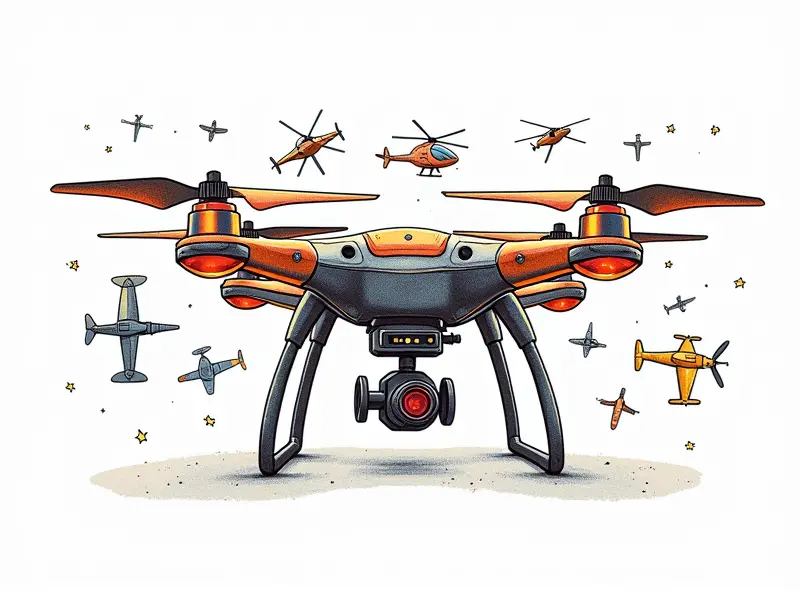Stabilizing drone footage

Ultimate Guide to Stable Drone Footage
Welcome to the ultimate guide on how to achieve perfectly stable drone footage. Whether you're a professional videographer or an amateur enthusiast, capturing smooth and steady aerial shots is crucial for creating captivating videos and stunning visuals.
Techniques for Rock-Solid Drone Cinematography
- Pre-flight Checks: Before taking off, ensure your drone's gimbal is properly calibrated. This helps in maintaining a stable shot even during sudden movements or changes in wind conditions.
- Use of Stabilization Features: Most modern drones come equipped with advanced stabilization features like three-axis gimbals and electronic image stabilization (EIS). Utilize these tools to their full potential for smoother footage.
Tips for Stunningly Stable Drone Pics
To capture stunning drone pictures, follow these tips:
- Shoot in Manual Mode: Switching from auto mode to manual allows you to fine-tune exposure settings such as ISO, shutter speed, and aperture. This ensures better control over the image quality.
- Avoid Windy Conditions: Strong winds can cause your drone to shake or drift off course. Wait for calm weather conditions to achieve sharper images without blur.
Easy Fixes for Shaky Drone Camera Work
If you've encountered shaky footage, here are some quick fixes:
- Adjust the ISO: Lowering the ISO can reduce noise and improve image stability. However, be cautious not to lower it too much as this might affect exposure.
- Increase Shutter Speed: Faster shutter speeds help in freezing motion and reducing blur caused by camera shake or wind turbulence.
Mastering Drone Footage Stability
Mastery over drone footage stability requires practice and patience. Here are some advanced techniques to enhance your skills:
- Practice Hovering: Spend time practicing hovering in different locations to get a feel for how your drone behaves under various conditions.
- Experiment with Different Modes: Try out different flight modes and settings offered by your drone manufacturer. Some drones offer specialized modes like cinematic mode which can significantly improve stability.
Secrets to Smooth Drone Video Clips
Achieving smooth video clips involves understanding the nuances of drone operation:
- Use a Follow Me Feature: If your drone supports it, activate the follow me feature. This allows you to control the drone's movements more intuitively and smoothly.
- Keep a Safe Distance: Maintain an optimal distance from subjects or objects in your frame to avoid sudden jerks due to close proximity.
Achieving Perfectly Stable Drone Shots
To achieve perfectly stable drone shots, consider the following:
- Plan Your Shot: Before taking off, plan out your shot angles and movements. This helps in anticipating potential issues and adjusting accordingly.
- Utilize Tripods or Landing Gear: Some drones can be mounted on tripods or landing gear which provide additional stability during takeoff and landing phases.
How to Stabilize Your Drone Videos
To stabilize your drone videos, follow these steps:
- Edit in Post-Production: Use video editing software with stabilization tools such as Adobe Premiere Pro or Final Cut Pro. These tools can help correct minor shakes and smooth out footage.
- Incorporate Time Lapse Techniques: Shooting time lapses can reduce the impact of small movements, resulting in smoother overall footage.
Top Tricks for Stable Drone Footage
Here are some top tricks to ensure stable drone footage:
- Use a High-Quality Camera Module: Upgrading your drone's camera module can improve image quality and stability. Some drones support interchangeable lenses which allow for better control over exposure.
- Leverage Drone Tracking Software: Use tracking software that allows you to lock onto moving objects or subjects, ensuring smooth and consistent shots even when the subject is in motion.
Tips for Flawlessly Stable Drone Shots
To achieve flawlessly stable drone shots, adhere to these tips:
- Regular Maintenance: Regularly clean your drone's gimbal and sensors. Dust or debris can affect the performance of stabilization features.
- Upgrade Firmware: Keep your drone’s firmware up-to-date for access to new features and improvements in stability algorithms.
Drastically Improve Drone Shot Stability
To drastically improve drone shot stability, consider the following strategies:
- Invest in Advanced Drones: Higher-end drones often come with more sophisticated stabilization systems and better camera modules. Upgrading to a higher quality drone can significantly enhance your footage.
- Practice Regularly: Like any skill, mastering drone stability requires consistent practice. Spend time flying regularly to hone your skills and adapt to different environments.
Conclusion
Maintaining stable drone footage is essential for creating professional-grade aerial videos and photos. By implementing the techniques and tips discussed in this guide, you can elevate your drone cinematography to new heights. Remember, stability is not just about the equipment but also about skill and practice. Keep experimenting with different settings and conditions until you find what works best for you.

